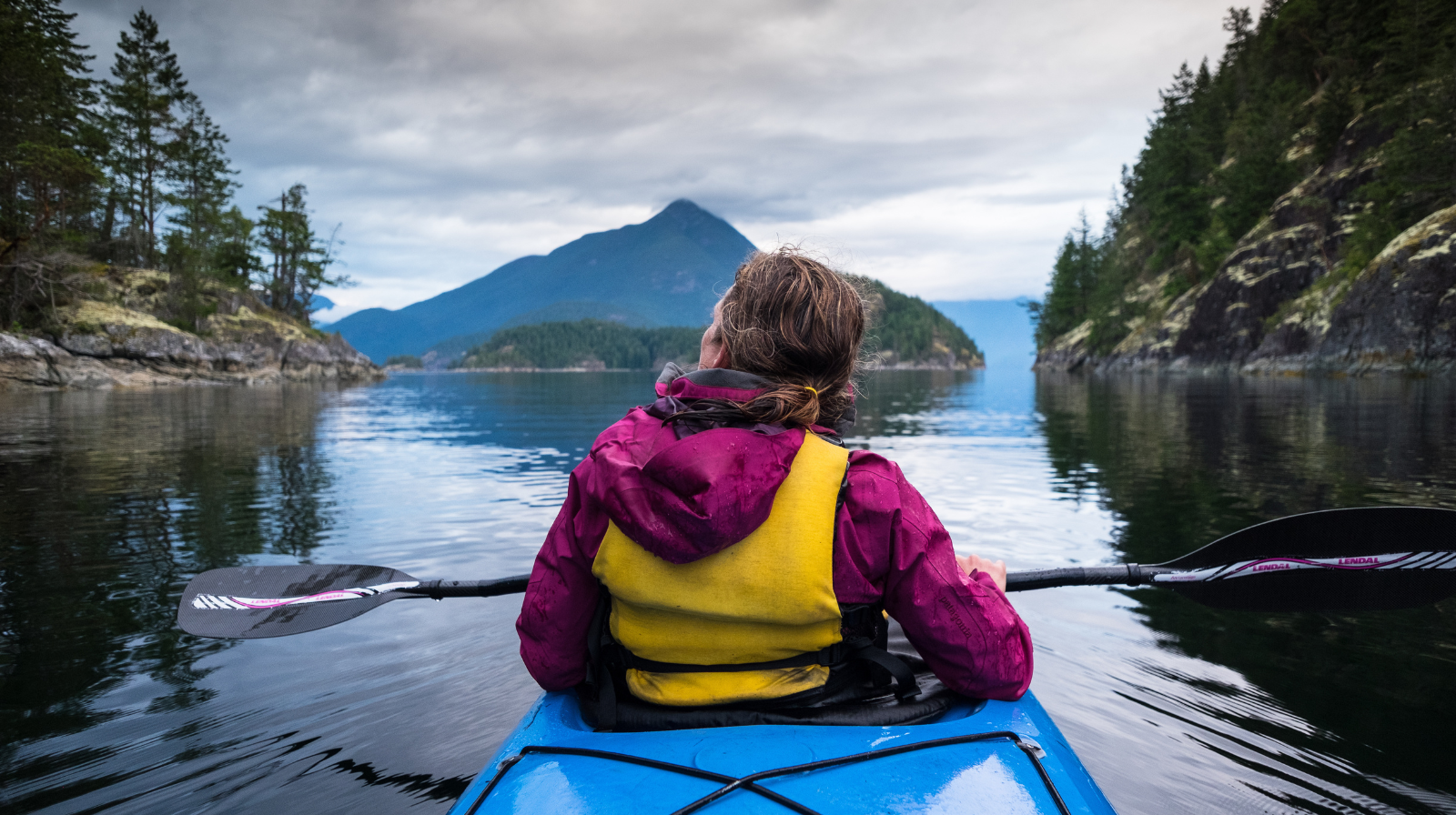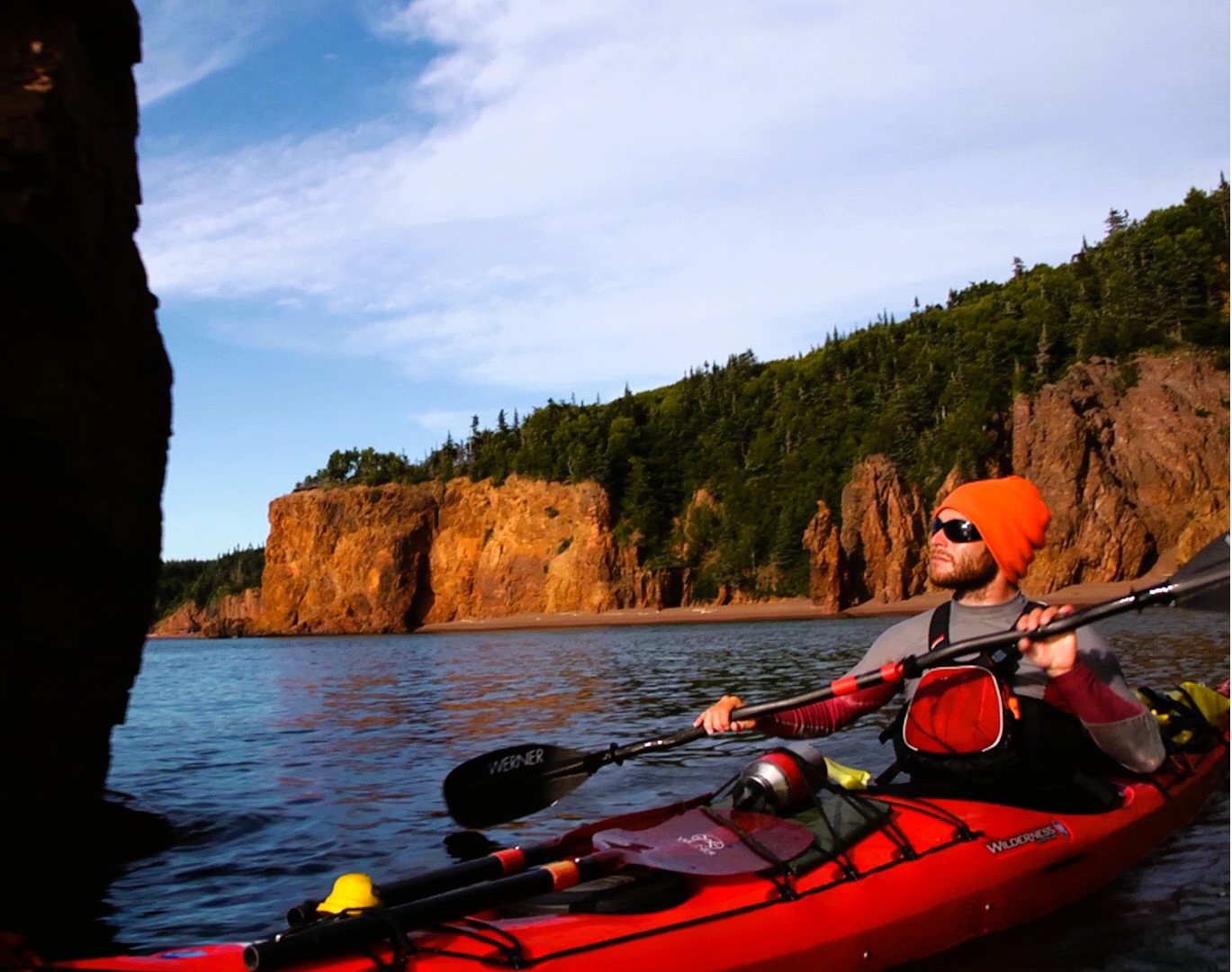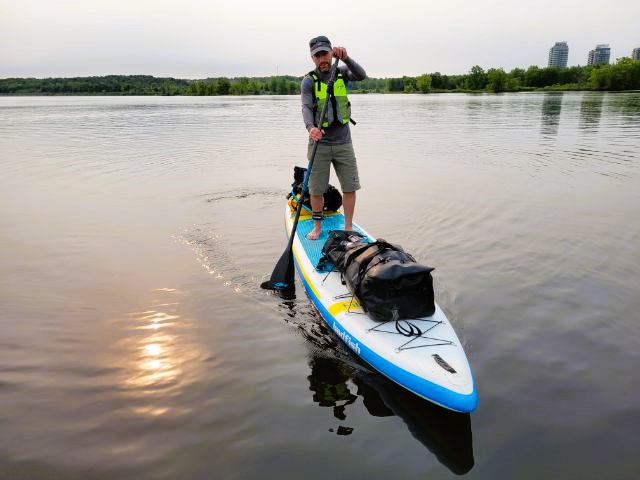The Therapeutic Power of Blue Space

Subscribe to Catalyst
Subscribe to get our magazine delivered right to your inbox
Related Articles
Related Articles
In 2009, experienced kayakers Zac Crouse and Corey Morris were descending a rain-swollen river in Nova Scotia when Morris was swept over a waterfall and died. At the time, the men were planning a kayak expedition from Ontario to the Atlantic Ocean. Traumatized by the death of his close friend, Crouse entered therapy and began taking medication, and two years later, he embarked on a 1,500-kilometre solo journey as part of his healing.
“At a basic level, it was a physical challenge, but there were also higher-level cognitive things happening,” says Crouse, who used to work as a recreational therapist and now teaches rec therapy in a university program. “You get into a trance-like state after so many hours of paddling. Your brain is seeing patterns on the water that don’t easily fall into slots and boxes. You’ve also got the sounds and feel of the wind. There’s a calming effect,” he says.
“The repetitive motion, the exertion, all the little things you have to pay attention to in order to make progress — those create a sense of flow,” Crouse adds. “And the problems you’re solving are very basic and immediate, not future vague ones.”
Crouse’s trip provided a break from rumination and regret. It helped him recover. And although people experience and respond to trauma in different ways, his journey exemplifies the curative potential of “blue space.”

Zac Crouse teaches recreational therapy. He took a long kayak journey to help with healing after the death of his close friend, Corey Morris.
Second nature
The benefits of hanging out in nature are well-documented: lower blood pressure and stress-hormone levels, less anxiety, more self-esteem. Now, a growing body of research suggests that spending time in, on, or near water can have a more positive impact on our health than other outdoor settings. A 2022 paper, published by a pair of University of California, Davis psychology researchers, for example, concluded that even looking at a creek or pool is enough to lower blood pressure, improve heart rates, and increase relaxation among respondents, a result they attribute, in part, to the evolutionary link between successfully detecting drinking water in arid environments and stress reduction.
Aquatic environments can also be hazardous, of course. Drowning is the third-leading cause of unintentional injury death around the world, according to the U.S. Centers for Disease Control and Prevention. Flooding is among the deadliest consequences of climate change, and it tends to displace or kill those with the least capacity to escape or adapt. Yet, as a species, we have a deep-rooted biopsychological bond to this molecular combination with two parts hydrogen, one part oxygen. Over the past decade or so, researchers have begun to deconstruct the affinity we feel for water, and they are exploring how integrating blue space into our communities and lives could pay tremendous dividends.
According to environmental psychologist Jenny Roe, director of the University of Virginia’s Center for Design and Health, blue space has four triggers that activate the human parasympathetic nervous system, a network of nerves that relaxes our bodies following stressful or dangerous experiences.
First, water instills a sense of being away. It can be either tranquil or dynamic, conditions that can make you introspective or dialed in to your surroundings, both of which serve as escapes from habitual behaviour.
Second, blue space – especially large bodies of water – conjures a feeling of “extent,” of being in a boundless environment where possibilities feel limitless. Although one can also experience these glimpses of an infinite existence while, say, hiking up a mountain, they’re amplified in blue space by acts like looking to the horizon or into the depths of a lake.
Third, the sounds and sights of water — as it runs over rocks, for example, or dances in the sunlight — can spark “hard fascination,” a concentration of our focus through stimulation, and “soft fascination,” an unconscious partial capturing of our attention that requires little effort and frees the mind to roam. Both can contribute to restoration. And fourth, water confers a sense of compatibility with our location; of comfort and belonging.

Author and stand-up paddleboarder Dan Rubinstein departing from Ottawa in June 2023 at the beginning of a 2,000-kilometre journey to explore the curative potential of blue space — an expedition that formed the basis of his upcoming book, Water Borne. Photo: Lisa Gregoire.
Flow states
Another environmental psychologist, Mat White at the University of Vienna, is arguably the world’s leading authority on blue space. He studies what happens when we do anything (paddle, swim, surf, walk, sit) around any type of water, from vast oceans to urban fountains. After leading several research projects and crunching some big numbers, White has concluded that these environments provide a boost by offering increased opportunities for both stress reduction and physical activity.
For one paper, White analyzed a UK census of approximately 48 million adults and found that the closer people live to the coast, the healthier and happier they are. “The crucial point about that research was that it was the poorest communities and individuals who got the benefits,” he says, referring to both mental and physical health. “If you’re rich, it doesn’t matter how often you spend time in blue space. You’re healthy and happy anyway. But if you’re poor, it matters hugely.”
The idea that a place with specific environmental attributes can reduce socioeconomic health inequalities is called equigenesis. Rich Mitchell, a population health researcher at the University of Glasgow, coined the word after publishing a paper that suggested income-related health disparities were less pronounced in neighbourhoods with better access to nature.
The quality of blue spaces affects their therapeutic properties, according to White, as does how we interact with them. Those variables are influenced by geography as well as cognitive and cultural differences. For example, people often prefer places they visited as children, and there are dramatic differences between walking and sitting, and different outcomes depending on how close we live to a blue space and how frequently we visit. But on the whole, when we’re near water, we tend to lose track of time and be more active, and every extra minute of movement is good for our health. “The goodness isn’t just the water,” says White, explaining that people tend to enjoy quality time with one another at places like beaches because of the sense of belonging they feel. “It’s a behavioural interaction that water encourages. This is one of the reasons we think blue spaces tackle health inequalities. They’re social spaces that draw us into cross-generational play.”
New depths
The kicker to all of this, the multiplier of multipliers, is that time spent in blue space, especially by children, promotes pro-environmental behaviour, which is another way of saying “taking better care of the planet.”
One of White’s frequent collaborators, British landscape architect Simon Bell, came up with the term “blue acupuncture” — basically, adding a splash of blue space to a community to help improve public health. For example, a recent project in a low-income neighbourhood in Plymouth in southwest England transformed a small neglected beach into a launch for personal watercraft, swimming area, and park with views of the harbour. The cost was around $150,000 USD and surveys assessed the well-being of area residents before, during, and after construction. Psychological health increased, as did perceptions of community cohesion. Families played in the park, seniors sat on benches, and teenagers took forays into the sea.
What does all this have to do with Zac Crouse’s kayak journey? The common denominator is water. Paddling all day helped Crouse’s brain “catch up to reality,” he says, supplanting a traumatic experience with new memories. But even if one’s connection to blue space is more subtle — a picnic beside a pond, a sunset stroll along a river — it can provide a restorative break from the tensions of daily life. These benefits are not a panacea, but because they “apply to millions of people,” says White, “the overall public health benefit is huge.”
Adapted from Water Borne: A 1,200-Mile Paddleboarding Pilgrimage by Dan Rubinstein, forthcoming in June 2025 from ECW Press.
Further reading: Good Grief: Is there a right way to grieve—and for how long?
Resource: Where to Get Care – A Guide to Navigating Public and Private Mental Health Services in Canada.
Author: Dan Rubinstein
A writer and stand-up paddleboarder based in Ottawa, Canada. His latest book, Water Borne (2025), chronicles his 2023 paddleboarding expedition from Ottawa to Montreal, New York City, and Toronto, exploring the deep connections between water, health, and community. Dan’s work, featured in publications such as The Walrus, The Globe and Mail, and Canadian Geographic, often focuses on outdoor adventures and the environmental importance of blue space.